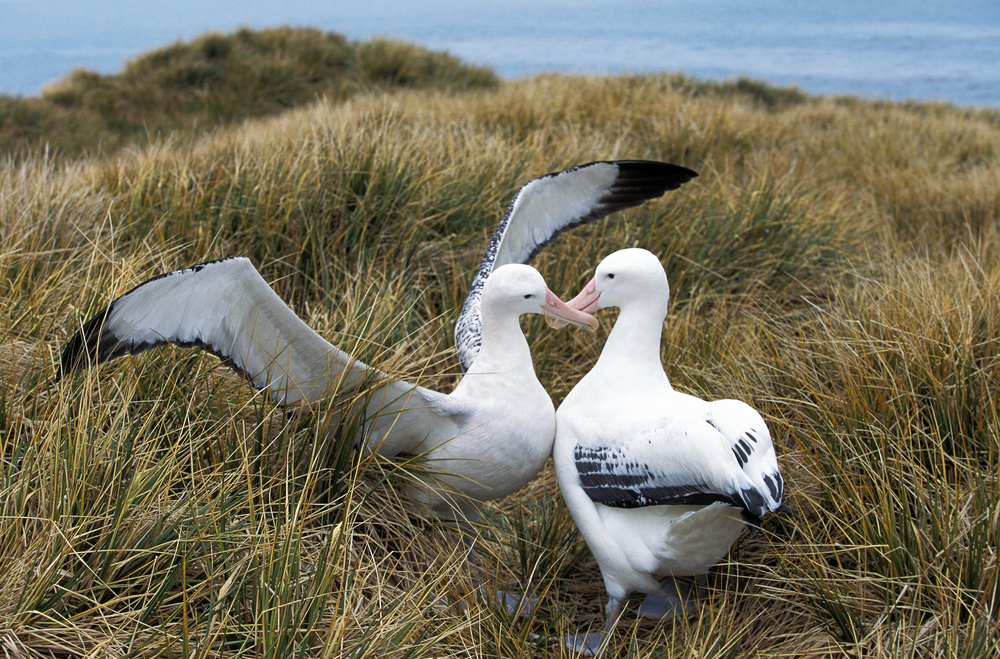Seabirds in Kaikoura
Hey there bird lovers! Are you ready to learn about some of the most amazing seabirds on the planet? Well, you’re in luck because today we’re diving into the winged wonders of Kaikoura, New Zealand.
Located on the east coast of the South Island, Kaikoura is home to a diverse array of seabirds that will leave you in awe. From the massive Southern Royal Albatross to the tiny Little Penguin, these birds play a crucial role in the area’s biodiversity and are an absolute must-see for any nature lover.
Why Kaikoura is a Hotspot for Seabirds?
One of the things that makes Kaikoura such a special place for seabirds is its unique geography. The town is situated on a rugged stretch of coastline that juts out into the ocean, creating a natural upwelling of deep, nutrient-rich waters. This underwater feast attracts a variety of marine life, including fish, squid, and crustaceans, which in turn attracts seabirds.
Another factor that makes Kaikoura a seabird haven is its mild climate. The area is protected from the worst of the elements by the Kaikoura Ranges, which creates a more stable environment for breeding and nesting. The surrounding forests, cliffs, and rocky outcrops provide the perfect habitat for many seabird species to roost and breed.
Additionally, Kaikoura’s location on the migratory path of many seabirds means that it is a key stopover point for many species on their annual journey. This makes it an ideal place for birdwatchers and researchers to study and observe these birds.
But it’s not just the birds that make Kaikoura special, the Maori people have a strong connection with the seabirds, and have named many of the birds and have stories and legends about them. The Maori people have been living in harmony with the seabirds for centuries and have a deep respect for these birds and their role in the ecosystem.
Types of Seabirds in Kaikoura

Let’s start with the Southern Royal Albatross (Diomedea epomophora), also known as the toroa. These birds are the largest of the albatross species and have a wingspan of up to 3.5 meters! Can you even imagine? They’re also known for their impressive aerial acrobatics and for traveling vast distances over the open ocean. Seeing one of these beauties in the wild is a truly unforgettable experience.
Next up, we have the Hutton’s Shearwater (Puffinus huttoni), or tītī, a small, dark-colored petrel that breeds only in a few coastal locations in New Zealand, including Kaikoura. These birds have a unique, mournful call that echoes through the night, and they nest in underground burrows. It’s pretty cool to think that these birds have been nesting in the same spot for centuries!
And last but certainly not least, we have the Little Penguin (Eudyptula minor), also known as the little blue penguin. These little guys are the smallest penguin species in the world and can be found along the Kaikoura coastline. They’re absolutely adorable and it’s a treat to see them waddle ashore to nest in burrows or crevices in the cliffs.
Conservation Efforts
Despite the incredible biodiversity of seabirds in Kaikoura, many species are facing serious threats from human activities. Habitat destruction, pollution, overfishing, and predation by introduced mammals are all taking a toll on these birds. That’s why various conservation efforts are currently in place to protect Kaikoura’s seabirds and their habitats.
One key initiative is the protection of important breeding and nesting sites. Several seabird colonies in the area are designated as wildlife reserves, with strict controls in place to protect the birds and their habitats from disturbance and development. The Department of Conservation and local Maori tribes work together to protect these areas and monitor the seabirds’ populations.
Another important aspect of conservation is the control of introduced mammals, such as rats, stoats, and possums, which can decimate seabird populations by preying on eggs, chicks, and adult birds. Trapping and poisoning programs have been implemented in key areas to reduce the numbers of these predators.
Research is also a crucial aspect of seabird conservation in Kaikoura. Studies are conducted on seabird populations and movements to better understand their needs and how to protect them. This information is used to inform conservation management decisions and to develop new strategies for protecting these birds.
Education and awareness-raising are also important components of conservation efforts. Visitors to Kaikoura are encouraged to learn about the area’s seabirds and to practice responsible wildlife viewing to minimize disturbance to the birds. Local guides and tour operators are trained to provide visitors with accurate information and to teach them how to observe these birds without disturbing them.
Responsible Observation and Appreciation
As visitors to Kaikoura, we have the opportunity to experience the incredible diversity of seabirds that call this area home. However, it’s important to remember that our actions can have an impact on these birds and their habitats. That’s why it’s crucial to practice responsible wildlife viewing.
One of the most important things to keep in mind when observing seabirds in Kaikoura is to stay on designated tracks and viewing platforms. Many seabird colonies are located on steep cliffs or offshore islands, and venturing off the designated paths can cause damage to the birds’ habitats and disturb their nesting sites.
Another important aspect of responsible wildlife viewing is to minimize disturbance to the birds. This includes not getting too close to nesting sites, avoiding loud noises, and not shining bright lights on the birds. Many seabirds are sensitive to human disturbance, and even a small amount can cause them to abandon their nests or delay breeding.
Properly disposing of all litter is also an important aspect of responsible wildlife viewing. Plastic waste can harm or even kill seabirds, which mistake it for food or become entangled in it. Visitors should always carry out all trash and dispose of it in designated receptacles.
Learn more!
There are several websites that provide information on responsible wildlife viewing and ways to support conservation efforts in Kaikoura. Some examples include:
The Royal Forest and Bird Protection Society of New Zealand shows guidelines on how to responsibly observe seabirds and other wildlife in New Zealand, including information on specific bird species and their habitats.
The Department of Conservation New Zealand provides information on responsible wildlife viewing and ways to support conservation efforts in New Zealand, including information on the Kaikoura region.
BirdLife International is a global organization that provides information on bird conservation and responsible birdwatching, and offers a range of resources including a code of conduct for birdwatchers and information on local conservation projects.
Seabirds.org shares information on seabirds, including distribution, conservation, and biology, and also offers guidelines for responsible seabird watching, as well as information on the conservation status of seabirds worldwide.
These websites are great resources for anyone interested in learning more about the seabirds of Kaikoura and how to appreciate and protect them while visiting the area.
Final words
Kaikoura’s seabirds are an absolute must-see and an important part of the region’s natural heritage. So, next time you’re in Kaikoura, make sure to take some time to appreciate these incredible creatures.
And remember, by supporting conservation efforts and practicing responsible wildlife viewing, we can help ensure that these seabirds will continue to thrive for many years to come.
So let’s all do our part to protect and preserve the avian diversity of Kaikoura for future generations to enjoy. Happy birdwatching!”
